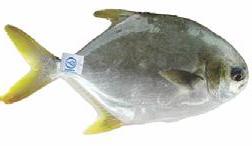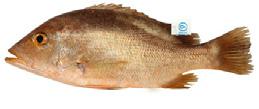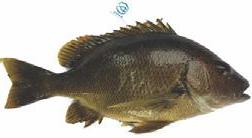
5 minute read
SUSTAINABLE SEAFOOD IN HONG KONG
Top: AFFS fish farm owner, Chan Ping-yau
Accredited Fish Farm Scheme
Advertisement
Being the top per capita seafood consumption, Hong Kong has been importing much of the seafood from overseas while local farms only supply less than 5% of the fish and seafood products to the city’s market. In other words, the potential of local fish and seafood farming is enormous.
Assurance of Safety and Traceability
The Agriculture, Fisheries and Conservation Department (AFCD) Hong Kong has been embarking on a mission to ensure the sustainability of local fish and seafood farms.
Launched in 2005, the Accredited Fish Farm Scheme (AFFS) is an initiative of the AFCD Hong Kong which aims to uphold the quality and safety of local aquaculture products.
Under the Scheme, quality assurance tests are undergone to ensure products comply with relevant statutory safety standards, namely heavy metals, drug residues and microbial quality of water. By providing quality and safe aquaculture products to the public, the scheme promotes the sustainable development of the local aquaculture industry.
Currently, more than 100 local fish farms have joined the Scheme that supplies a wide variety of live fish, chilled and frozen local high-quality aquatic products, including grey mullet, jade perch, pompano, giant grouper, Japanese seabass, red snapper, star snapper, cobia, etc.
“Fish farming is my pursuit. I feel so satisfied when I see my fish grow big and strong,” says Chan Ping-yau, the owner of a registered AFFS fish farm.
AFCD visits his fish farm once a month to test the quality of water and the fish. He explains, “Upon passing the test,the department will issue the label to our fish products.”
Jade Perch

Native to Queensland, Australia, it’s a good candidate for pond fish culture. With its high nutritional value and high percentage of polyunsaturated fatty acids, Jade Perch enjoys strong consumer acceptance throughout Asia. And Jade Perch is easy to eat with less bone, oily and rich flavour. To have a tasty dish, either steaming or pan-frying is suitable for Jade Perch.
Grey Mullet

Grey mullet grows at estuaries. It is plump, cylindrical in body shape and rich in fat. Yuen Long grey mullets are famous for their high fat content all year round.
Giant Grouper

Also known as Queensland grouper or brindle grouper, it is the largest species of grouper. Local aquaculture produced Giant Grouper is rated as premium seafood and its quality is strictly monitored. Its body is robust and mainly greyish-brown in color with a mottled pattern. The meat is a special delicacy, rich in protein while the skin contains plentiful gelatin.
Pompano

Mainly living in the Red Sea and sea of East Africa, from the southern sea of Japan to the northern sea of Australia. Its body type are round flat and the meat is delicious and creamy. It is suggested to cook by steaming with soy sauce. Nowadays, we could buy Pompano throughout the year in Hong Kong.
Red Snapper

Named as redfish or maya-maya as well, the Red Snapper has a large, flat and oval-shaped body in eye-pleasing bright red colour. Having few bones and with a tender, thick texture, it is meaty and suitable for various ways of cooking.
Japanese Seabass

Japanese seabass or simply ‘seabass’ is known as ‘Suzuki’ in Japanese. It has an elongated body with rather flat flanks. Generally it is about 40cm in length, but the maximum recorded length is 1.02m and with a weight of 8.7 kg. It is a versatile food fish that can be used for cooking soup, grilling, braising, deepfrying or steaming.
Cobia

Cobia is a species of the family Rachycentridae with a number of common names such as black salmon, lemonfish, prodigal son, etc. It has a broad and flattened head, dark brown elongated body with two narrow horizontal bands on the flanks. The meat is firm with buttery flavor that can be used as sashimi or fish steak.
Star Snapper

Both its head and back are red or red-brown in color. And it has yellowish-white belly, bright yellow fins and there is a distinct white spot on the body. Wild star snapper mainly lives in the Indian Ocean and the Pacific. Nowadays, with good aquaculture practices across local fish farms, star snappers could be provided throughout the year in Hong Kong.
For Retail & Foodservice
Located in Yuen Long, Sail Fish Co. Ltd is one of the largest participating AFFS fish farms.
Its founder, Lai Loi-chau, said that the fish farm produces mainly grey mullet, grass carp, jade perch and shrimp to the local market. He supplies the fishes to Chinese restaurants and Hong Kong-style cafes (often called Cha chaan teng), as well as retailers like Wellcome Supermarket, Yata Department Store, and HKTV Mall.
Lai said that freshwater fish is easily tainted with muddy or earthy odours, so cleaning the mud of the ponds every 2 to 3 years on regular basis is a must. Additionally, paying special attention to the mix and quantity of feed is also important. In order to pass the AFCD’s tests for muddy smell, the company processes its products in the self-owned ISO-certified plant. Every day fish are delivered to the plant at about 6 pm for cleaning, seasoning, sealing, packaging and chilling before being shipped to various retail locations.

Founder of Sail Fish, Lai Loi-chau
Top Asian Restaurant Endorses Accredited Fish
“Aside from the usual steaming, poaching is a delicious choice. Large fish can be sliced and chunk-cut for making two different dishes," says Wendy Chan, Managing Director of Rainbow Seafood Restaurant, who also stated most people today is becoming more concerned about the food they eat and where it comes from. Since letting diners eat at ease is the key to running a successful restaurant, making sure the fish they purchase comes from an accreditable and traceable source is the very important, remarking that “I believe the AFFS fish, with a buttery texture, is exceptionally tasty and meaty, and its quality is rest assured.”
Rainbow Seafood Restaurant was established in 1984 and is the largest seafood restaurant on Lamma Island. It has won numerous awards over the years, and was named by the "The Miele Guide 2009” as one of the Best 450 Asian Restaurants.
A must visit for seafood lovers. Enjoy a delicious feast with AFFS aquaculture products. Miam-miam!

Managing Director of Rainbow Seafood Restaurant, Wendy Chan

